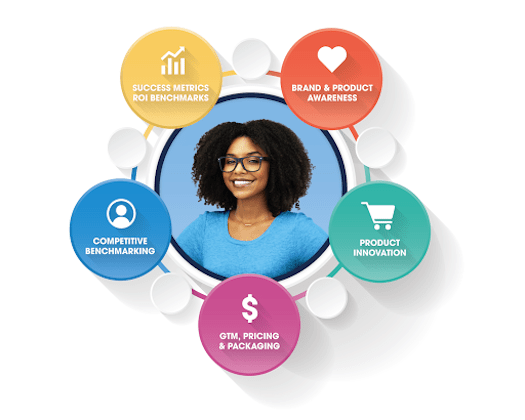This post is part of a regular series called 360 Perspectives, featuring customers, partners, and experts unraveling the complexities of what it takes to change mindsets, connect silos, and put the customer at the center of their business.
How well do you think you know your customers? Some of your team might say, “I talk to customers all the time. We know them well.”
However, talking is different from listening. We change when we listen. And listening to understand your customer is the keystone of any business transformation.
Regardless of the product or service you’re creating, marketing, or selling, it’s about the audience and the customer you’re trying to reach. If you don’t exercise empathic listening, then how do you really understand their challenges and needs?
Creating forums for feedback not only empowers you to proactively solve their problems — particularly ones not on your radar — but it also builds trust and healthy relationships in which customers feel genuinely valued.
Get started: 7 ways to formalize customer listening
Before you commit to new initiatives or change, ask yourself and your peers: What stories are our customers telling us? Have we listened deeply to customer feedback recently?
Here’s how to embed customer listening into your company’s DNA to ensure transformation efforts are hyper-focused on their needs:

To prioritize where to ignite change, it’s best to get an understanding of top needs for each customer persona. Here are some of the best practices Salesforce follows:
1. Create a voice-of-the-customer function
The right program will have both business-focused research leaders and a neutral reporting structure. That way, the team responsible for delivering improvements isn’t also keeping score. Get feedback from customers to establish a baseline and set a single improvement goal as your starting point.
2. Invest in listening at every level
Target all personas in your ecosystem. Which customer groups experience the most pain? Which drive the most revenue? Who are your greatest brand advocates? Don’t fear their feedback.
3. Integrate insights into one narrative
Tell one story behind the numbers. Just as you want to balance your listening across channels, you want to balance your data with a story. Listening tours, advisory boards, and focus groups bring color and context to scorecards and trendlines.
4. Operationalize insight reviews
Integrate customers into strategic planning, and assign an accountable owner to each metric or measurement that stems from what you learned when listening. Does the executive team plan future products or programs at an offsite or every Monday morning? Wherever planning takes place, save a seat at the table for the customer’s voice.
5. Invest in intelligence and automation to drive accountability
Automating analysis and reporting saves your team valuable time. A sensing tool or machine layered on top of your qualitative feedback is one of the most effective ways to unlock insights.
6. Inspire a customer listening movement
Sometimes the team sharing customer feedback is perceived as the “bad news” team. Instead, motivate your team and your stakeholders to stay engaged and keep acting on customers’ needs by recognizing results and rewarding teams that become listening champions.
7. Close the loop with your customers
Listening means you need to communicate. It’s unrealistic to take action on every piece of feedback, and customers don’t expect you to do everything they ask. But they do expect to hear back from you on what you are doing, what you’re not able to do, and what else you need from them for a successful partnership.
Listening is hard work, but the results are worth the investment. The reward of customer-led innovation is clear. It’s no surprise that today’s fastest growing companies also rank as the most customer-centric. Customer listening programs are also one of the most proactive ways you can act now to put the customer at the center of everything you do.
Check out our Customer 360 Playbook for more on how you can drive customer-centric transformation within your organization. To follow this series, subscribe to our blog newsletter or check out our last installment on how to build one team around the customer.




























